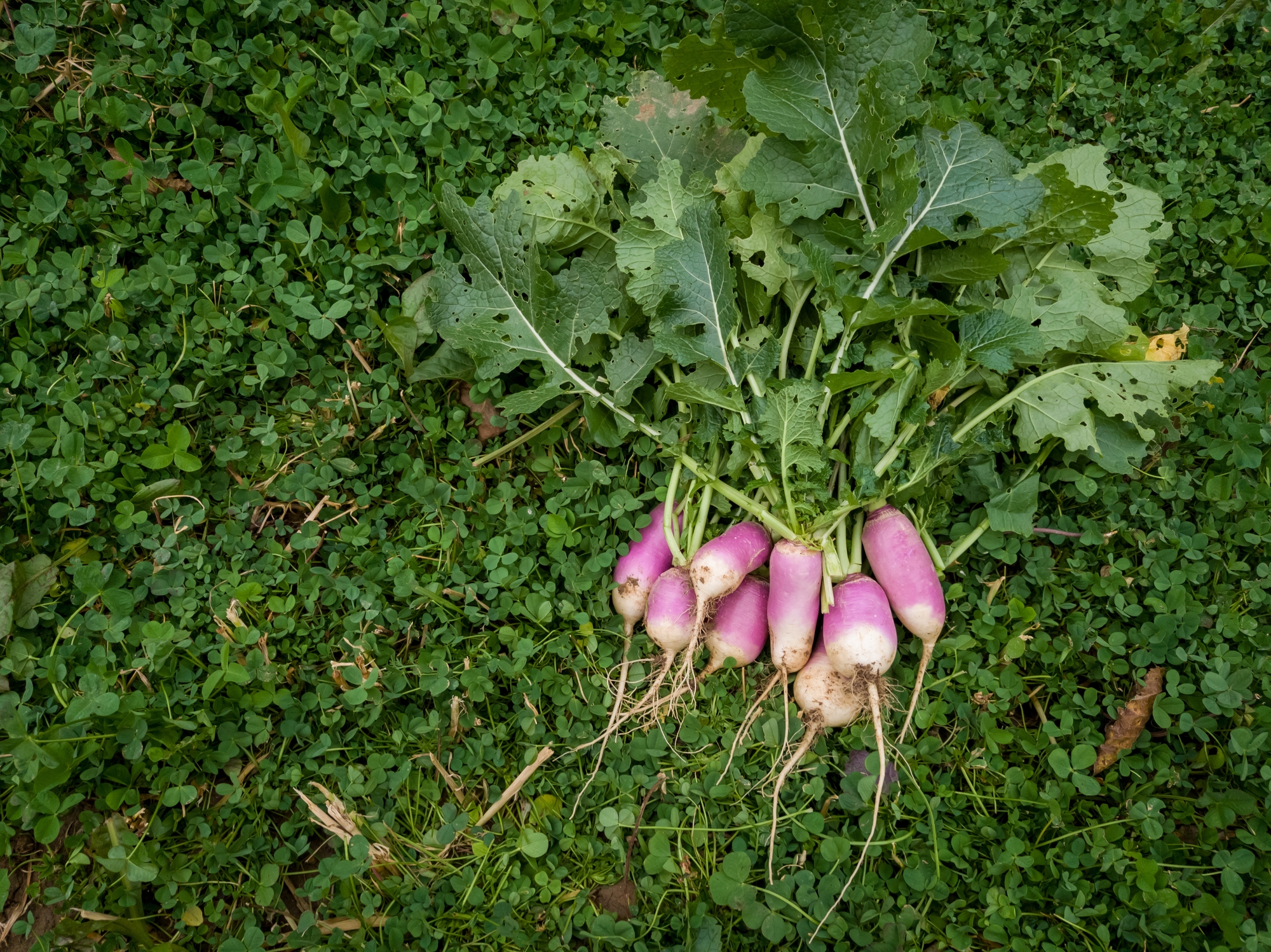Wild Turnip
The Prairie Turnip (Psoralea esculenta), also known as Breadroot or Tipsin, is a leguminous perennial native to the North American prairies, including parts of Alberta. This plant is notable not just for its ecological role in the grasslands but also for its historical and continued significance in Indigenous cultures.

More on Wild Turnip
About
The Prairie Turnip grows primarily in the dry prairies and features compound leaves and small, bluish-purple flowers. Its most distinguishing feature is its turnip-like tuber, which grows underground. This tuber has been a crucial food source for Indigenous peoples for centuries. The plant serves an ecological role too, as its deep-growing tuber helps in soil stabilization and can retain water, making it well-suited to Alberta's sometimes arid conditions.
History
For many Indigenous communities, especially the Plains Indigenous peoples, the Prairie Turnip has been a staple food and medicine source. Before European contact, it was a primary root vegetable for tribes such as the Blackfoot and Cree in the Alberta region. Historically, these tubers were often sliced and dried to be stored and later reconstituted in soups or stews or ground into a flour-like substance for various culinary applications. In addition to its food value, the Prairie Turnip has traditional medicinal uses, with parts of the plant used to treat ailments ranging from coughs to wounds.
Ways To Cook
The tuber of the Prairie Turnip is the primary edible part. When freshly harvested, it offers a crisp texture with a mildly sweet and nutty flavour, somewhat akin to a radish or jicama. They can be consumed raw, sliced into salads for a crunchy element. Traditional preparations often involve boiling or roasting the turnip. As previously mentioned, drying is a common method of preservation, with the dried slices rehydrated as needed in soups or stews. In a modern culinary context, the Prairie Turnip can be creatively integrated into dishes, perhaps as a local substitute for other root vegetables, or its unique flavour can be highlighted in salads, roasts, or even pureed preparations. This plant must be harvested carefully and with the deepest respect, as it can take several years for the tubers to form.
Ecologists recommend only taking a few from each patch, and dispersing seeds from mature seed heads as you harvest, to ensure the population thrives.
